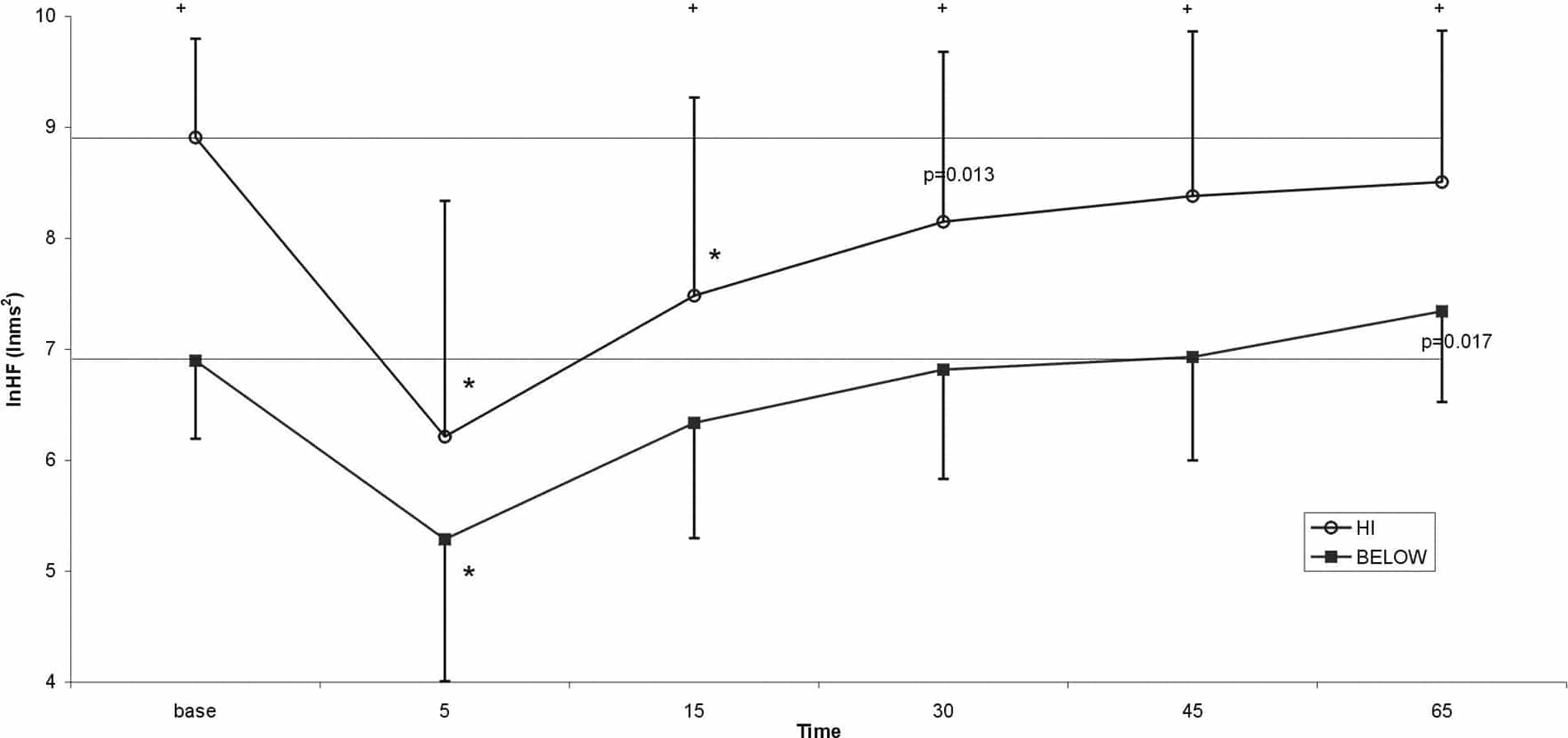Arrhythmic event risk is augmented with low vagal activity. Exercise training can reduce this risk by increasing vagal activity. The reduction in vagal activity immediately following exercise may increase the risk of cardiac arrhythmias and sudden cardiac death. To date the effect of baseline vagal activity on the recovery of cardiac autonomic activity up to 1 hour post-exercise has not been examined. 28 healthy, untrained volunteers (10 females, 21.0±2.6 years) performed a 20 min hard intensity (3mmol.l-1 blood lactate concentration) constant load test. ECG data were collected for 5 min at baseline and then for 5 min epochs at: 5, 15, 30, 45 and 65 min post-exercise. Heart rate variability (HRV) analysis to assess cardiac autonomic activity was performed to obtain: mean R-R interval, root mean squared of successive differences (RMSSD) and frequency analysis of high frequency spectral power (HF), both representing vagal activity (HF was naturally log transformed prior to analysis). Volunteers were divided according to basal HF by finding the median lnHF value of all volunteers at rest (7.89 ln ms2) and then grouping the volunteers above or below this threshold to form HI (10.39 to 8.00 ln ms2) and BELOW (7.79 to 5.84 ln ms2) groups. Independent sample t-tests were used between groups, with repeated measures ANOVA to identify changes from baseline within groups. Mean R-R interval was not significantly different between the groups at any time point indicating that mean R-R interval values are not wholly dependent on vagal activity. Meanwhile, vagal activity (lnHF and RMSSD) was reduced in both groups 5 min post-exercise (p<0.01). Thereafter, HI and BELOW reacted differently with BELOW returning to, then overshooting baseline values more rapidly than HI in both vagal measures. Interestingly those with lower vagal activity return to baseline quicker and even overshoot baseline. This may indicate that individuals with vagal activity below a certain threshold but above another level (as these are young, healthy subjects with relatively high basal vagal activity), may gain cardioprotection following hard exercise whereas the HI group may already have a basal vagal tone above the threshold to elicit cardioprotection.
University College Dublin (2009) Proc Physiol Soc 15, C120
Oral Communications: Recovery from exercise in humans: dependence on vagal activity
V. Gladwell1, G. Sandercock1, S. Dawson2
1. Biological Sciences, University of Essex, Colchester, United Kingdom. 2. Biomolecular and Sports Science, University of Coventry, Coventry, United Kingdom.
View other abstracts by:
Figure 1: lnHF (ln ms2) during recovery from exercise in HI and LOW groups. * shows significant differences from baseline (p≤0.01); + shows differences between groups (p≤0.05).
Where applicable, experiments conform with Society ethical requirements.

